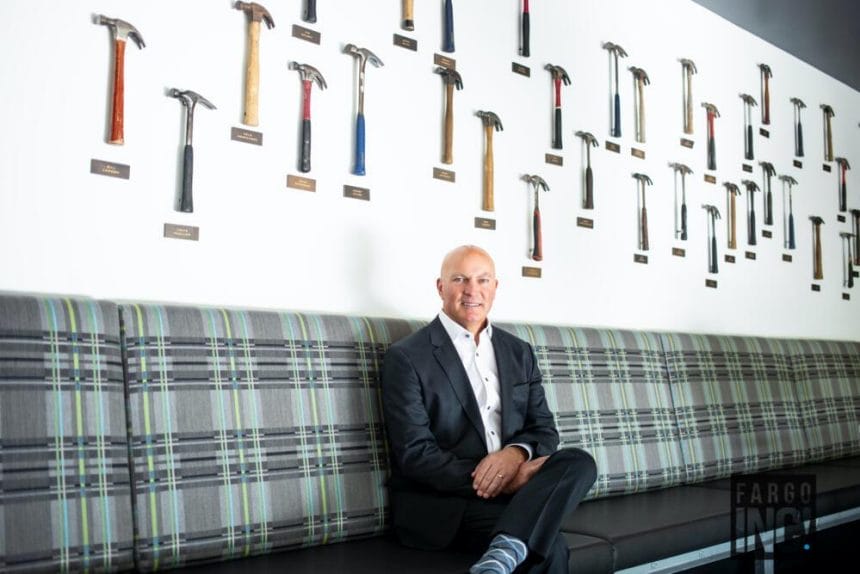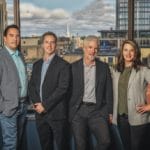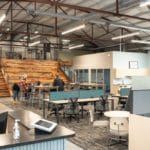Rated as the 98th largest privately-owned firm in the United States by Forbes in 2019, Mortenson is an absolute powerhouse of a local company. With its headquarters in Minneapolis and locations in Fargo and all across the country, Mortenson has built its success constructing everything from sports stadiums to renewable energy facilities.
With such a strong company under his watch, it’s safe to say President and CEO of Mortenson, Dan Johnson, has some interesting things going on. We caught up with him to learn more.
What was your first experience with construction?
I grew up in a construction family in a town of 500 people in west central Minnesota called Ashby. My family were all masons growing up. When you turned 14 years old, you were expected to start working on a job site as a mason tender. When my cousins and I started working together the summer I turned 14, I realized pretty quickly that I probably wasn’t cut out to be a physical laborer. As I looked at my uncles and cousins who did that for a living, I realized that’s a really tough job. So, I earned a tremendous amount of respect for the men and women that work in the field early on in my life.
Later on, I started college in the tri-college system as an architectural student at Moorhead State. During my time in college, I worked construction to pay for tuition. I quickly realized in the classroom that while I could draw, I was not an artist and being an architect is really about art. It’s really about creating and being creative. I also realized I was more suited to make somebody else’s creativity come to life. So, my advisor advised me to check out NDSU’s Construction Engineering and Management programs, which are some of the best in the nation. I really liked the fit and haven’t looked back since. As I neared graduation, I only had one interview. Fortunately, that interview was with Mortenson where he has worked for almost 35 years ago now.
What was your time like at NDSU? I have to imagine you were pretty busy with all of the construction work you were doing.
I played some intramural sports but I would typically have two or three jobs. So, though there wasn’t a lot of time for other activities, I did have a lot of fun. Some of my best friends in life have been folks that I met at NDSU.
Could you give me 360-degree bullet-pointed overview of what your role as CEO entails at Mortenson?
I would say there are probably four main things I focus on, maybe more. Safety would be one of them. At the end of the day, no matter how successful we are, no matter how many projects we have on time, no matter how many projects are under budget and no matter our profitability, we don’t want anyone getting hurt on our job sites. We have a zero injury program. We believe that all injuries are preventable and we strive for zero injuries on all of our projects.
I think a cousin to safety is culture. Most companies say that what makes them unique is their people. But of course, when every company says they’re unique because of their people, you scratch your head and say, “well that can’t be.” However, I do believe that companies can have unique cultures. I think those cultures are what attract and retain a certain type of person and that’s what I believe we have.
The next thing would be growth. Growth is important because it provides opportunity for people. If you’re not growing, you’re stagnating. It really is incumbent upon me and the rest of our senior leadership team to be looking downfield, scanning the horizon and developing a strategy for the next opportunities.
Lastly, I think it’s about putting the right people in the right place and supporting them. It’s not trying to do their jobs for them.
As a huge sports fan, one of my first reactions when I found out we were going to be doing a story with you was, “Oh, they built US Bank Stadium and they’re building the new Raiders stadium in Las Vegas and so forth.” How does Mortenson bid a project like that, and what does your involvement look like? Are you sitting down and talking with Mark Davis?
One of the biggest misconceptions about construction is that we bid our work, when actually most of our work isn’t bid. We position and negotiate based on a fee, which is only a small portion of the project, let’s say 3 percent of the project, as well as our general conditions, which is essentially our people. We’re typically hired early on when the designers are brought on board. After that, we might spend a year working on a stadium in what’s called pre-construction during the design phase. This entails designing the project, making estimates, doing constructability reviews, figuring out what the schedule is going to be, figuring out what we can build and figuring out what the cost is going to be.
Then we take it a step further by helping our customers design the project so that, in the case of a sports facility, it actually generates more revenue and has a better fan experience. One thing we do in sports is utilize our digital integration business, which is essentially putting in the whole Wi-Fi system. So it goes beyond just building the project, we incorporate a multitude of other services that go into making the finished product successful. We get very close with our customers during that process and during the construction process.
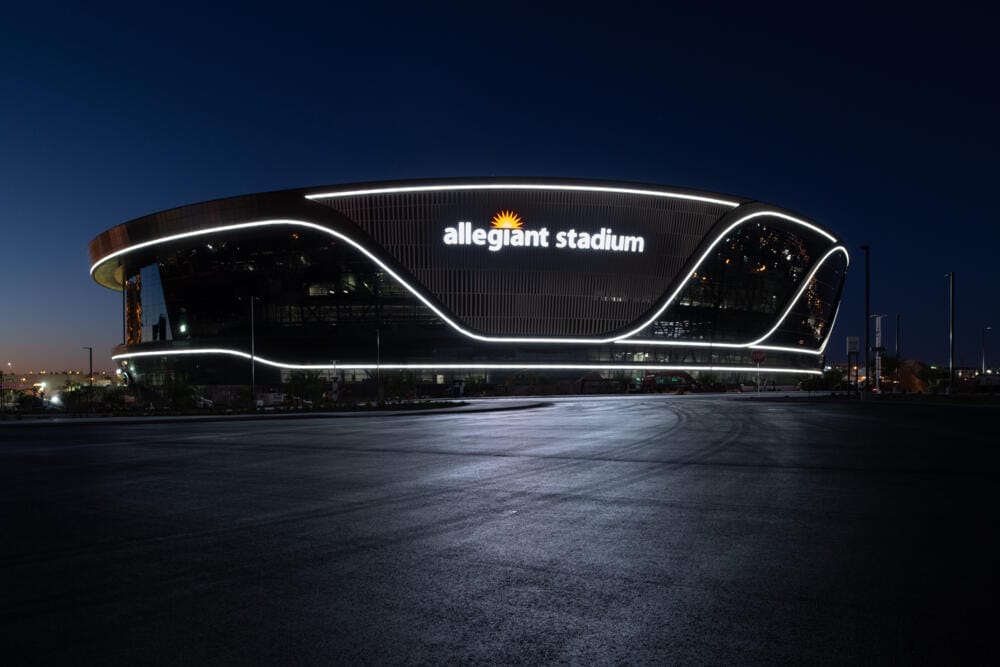
Though the average company project size is under $10 million, as the No. 1 general contractor for sports in the country, they have built a number of professional sports facilities over the years.
Can you tell me a little bit about the company’s journey into the renewable energy space? I’ve been told you were pretty instrumental in that.
I was fortunate to be one of the people that was involved early on. We got our first chance in 1995 when we got a call from what was at the time Northern States Power and is now Xcel Energy. They had an agreement with the Public Utility Commission to build wind turbine projects in order to keep their nuclear power plants going. Our first wind project was in Iowa.
We are now one of the leading renewable energy builders in the United States for wind and solar. Adding to that success, we also build the third leg of that stool, which is battery storage. Combining battery storage projects with wind and solar is very important so utilities can store energy and deliver it when the demand is there. One of the challenges with renewable energy is that it produces energy when the wind blows and when the sun shines, but that isn’t always necessarily when you need power. That’s why we’re now designing and building large battery storage facilities to store the energy and deliver it to the grid when you need it.
That sort of high-level battery storage has to be a relatively new thing, isn’t it?
It’s a new thing over the past few years. In the past, we’ve done smaller ones, but we’re getting ready to do some really big ones. The smaller ones were $1 million to $5 million kinds of projects. We’re now going to start doing $50 million to $250 million dollar projects. So it’s accelerating pretty quickly.
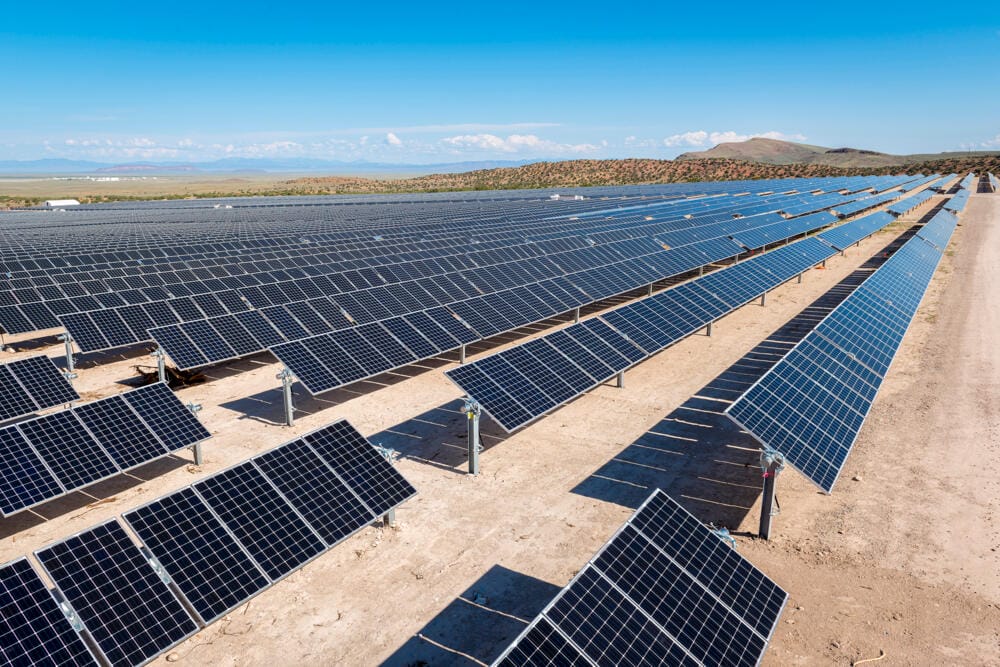
Can you tell me about your advanced leadership development program?
15 years ago I realized I was the youngest person on our senior leadership team and our senior leadership at that time was probably 10 people. I realized that all my partners were going to retire before me and the company was growing really fast. We didn’t really have a way to prepare new, up and coming leaders. When I started, the way I was prepared to be a leader was essentially around the “campfire.”
With how much the company has grown, we can’t rely on that campfire way of learning to drive our culture and how we lead. So, we designed and put in place a year-long advanced leadership program. Every year, we take about 25 up and coming leaders in the organization and put them through our advanced leadership program. Most of the classes are taught by senior leaders and we talk about our own personal experiences, failures, vulnerabilities, things that we didn’t do correctly, and what we learned from it all. I think one of the magic parts is being vulnerable in front of people and saying, “I made mistakes, and here’s what I learned from it.” That really changes the dynamic in the room, and by the end of the year you know those 25 people really well and they know you really well. It’s been a fantastic program.
A couple of years ago, we also decided we needed a leadership program for team members that don’t go through the advanced leadership program. So, we created a program called Lead BLU where every team member in the company participates. It’s really about perpetuating our culture and growing together. It’s about advancing people as leaders and continuing their self-learning and their ability to communicate and lead. It allows people to grow in horizontal careers, not just up the ladder. We celebrate this and the growth opportunity it provides for all team members. Take a superintendent in the field, who works their whole career focused on being the best builder they can be, we want to celebrate that because becoming an expert at your craft, an expert in your field, is as important to the company and maybe more important than the people that climb the ladder and become vice presidents.
What’s it like being the CEO of a family-owned company?
I’m very fortunate. The Mortenson family is incredibly generous and incredibly smart in the way they lead the business. David Mortenson is the only Mortenson family member who’s actively involved in the construction company. He’s my partner in every way in running the company. He’s a chairman who’s really an executive chairman and is very active. There isn’t a major decision that we make as a company or that I make as a CEO that David is not involved in. The family is also incredibly generous in terms of giving back to the community and we couldn’t be more fortunate for their involvement

Doing Good In The Community
Johnson’s son has Crohn’s disease, a chronic inflammatory bowel disease, and the research into dealing with the disease is very important to Johnson who is very active with the Crohn’s and Colitis Foundation.
“Mortenson has been an incredibly generous giver to that organization,” said Johnson.
Johnson is also heavily involved in the ACE Mentor Program, an organization focused on getting high school students exposed to the architecture, construction and engineering fields. Much of the program works with inner-city schools where kids wouldn’t otherwise get exposed to opportunities in those fields.
